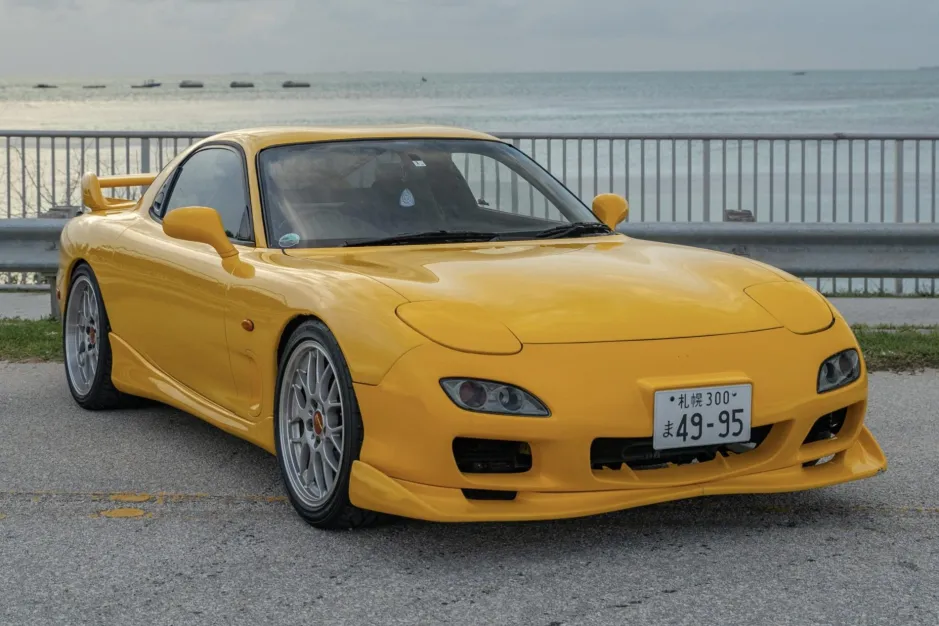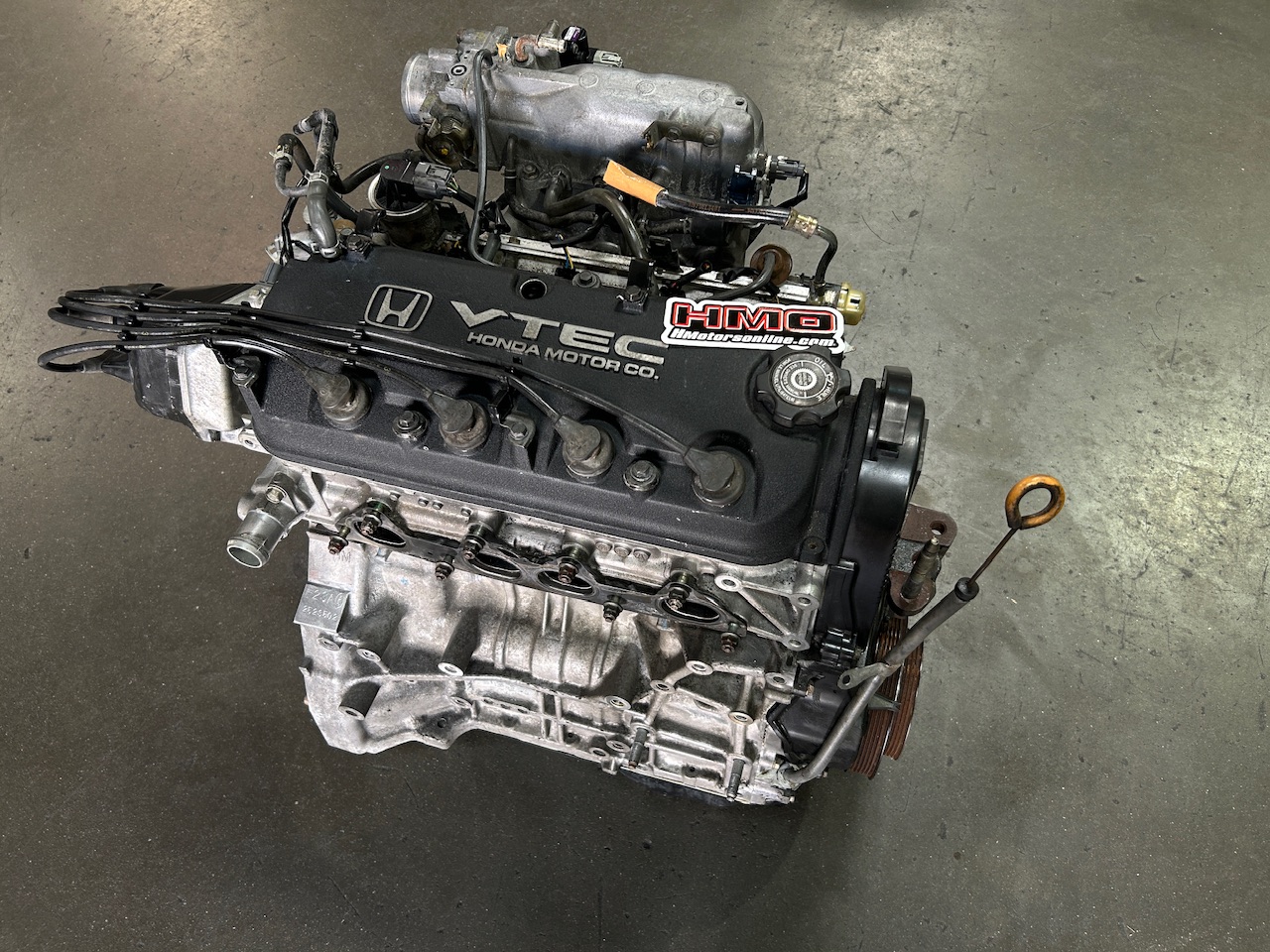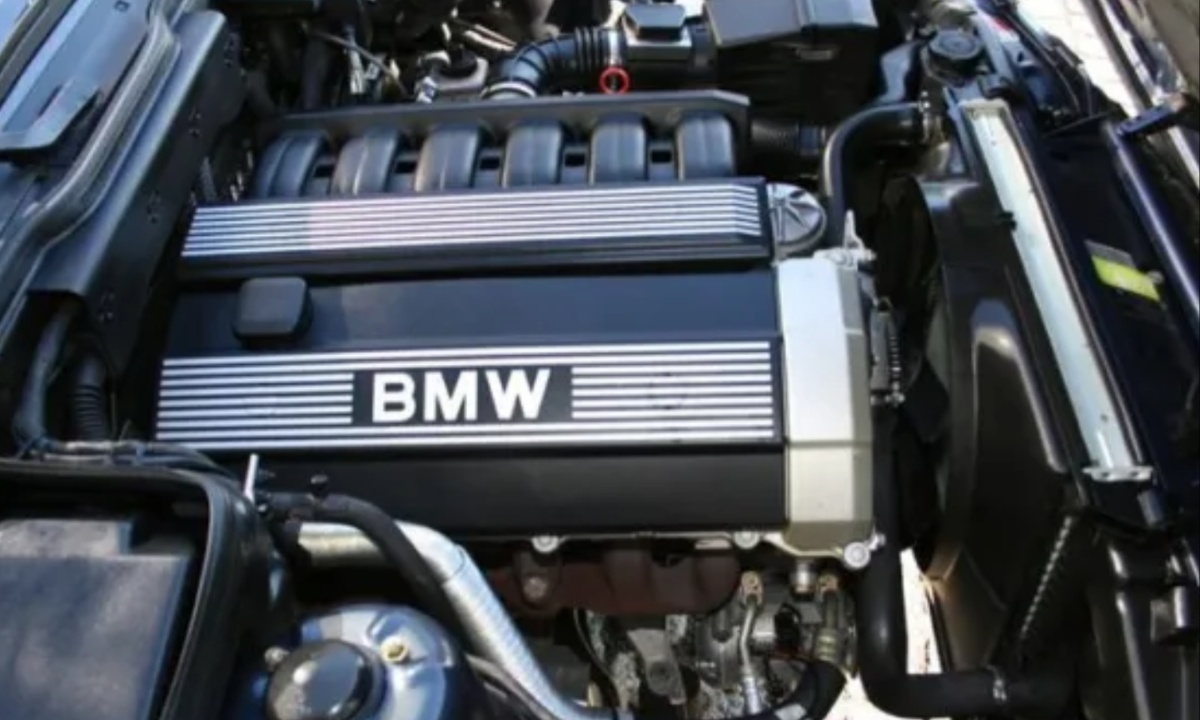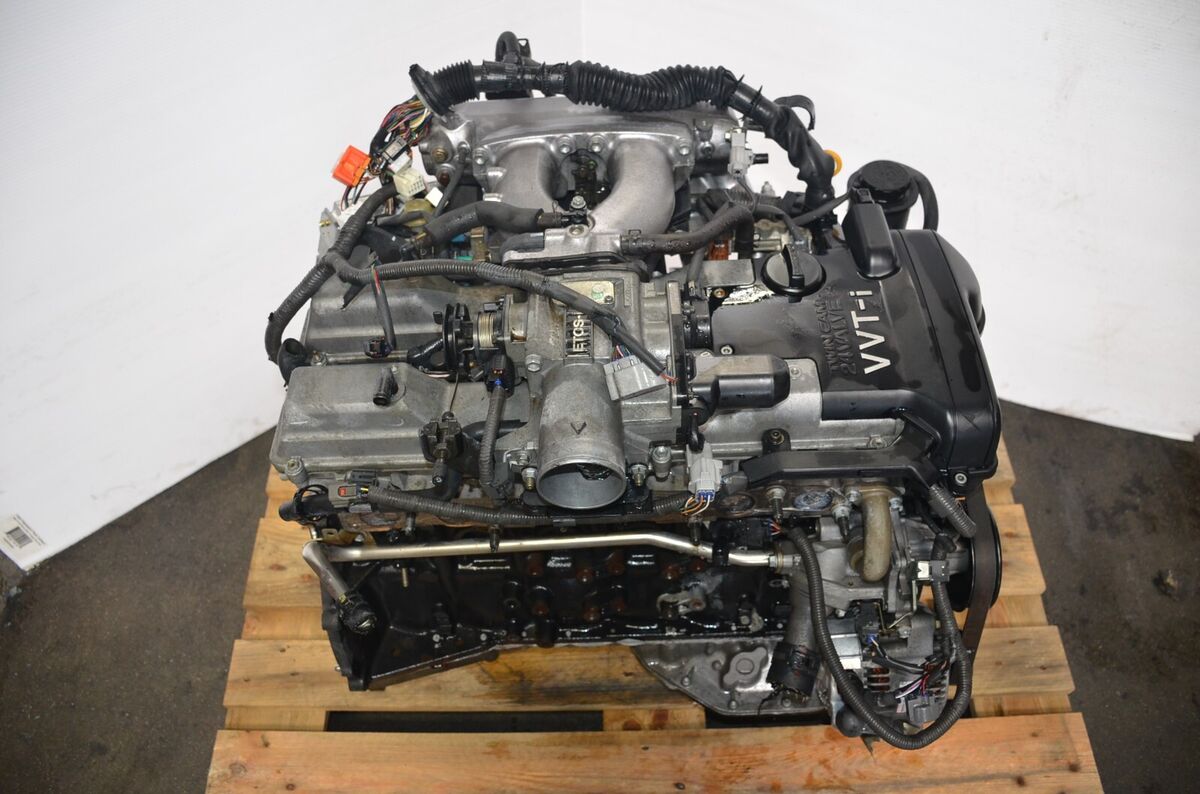The automotive world was at a crossroads in 1995. The air was buzzing with innovation, yet the weight of looming regulations and corporate consolidation signaled a coming shift.
Car enthusiasts, engineers, and even casual drivers didn’t know it at the time, but 1995 would stand as a historic threshold—a final golden moment when performance, reliability, and mechanical purity coexisted in harmony before the tidal wave of modern complexity fully swept in.
Up until the mid-1990s, automakers were in a fierce race to create powerful, engaging engines that pushed the boundaries of what internal combustion could do. Manufacturers honed naturally aspirated engines to near-perfection.
Reliability was increasing, tuning potential was abundant, and a growing wave of Japanese and European imports brought high-revving, well-balanced engines to the global market.
Technology like variable valve timing and multi-point fuel injection had matured and was being implemented across a wide range of vehicles—not just premium or performance models.
Yet, 1995 was also the calm before a technological storm. OBD-II (On-Board Diagnostics II) regulations became mandatory in the U.S. in 1996.
While intended to improve emissions tracking and diagnostics, the shift brought increased electronic complexity that limited the ability for owners to modify or tune their own engines without specialized equipment. Manufacturers also began building engines for regulatory compliance rather than pure performance or longevity.
In hindsight, 1995 stands as a mechanical sweet spot. Engines were durable, serviceable, and full of character. Whether you wanted a screaming rotary, a bulletproof inline-six, or a low-end torque monster, 1995 had something special to offer.
It was the last year before everything changed—before we sacrificed simplicity for software, feel for fuel economy, and soul for sensors.
Also Read: The ‘Unkillable’ Engine That Was Once Used in Both Planes and Cars
The Pinnacle of Naturally Aspirated Performance
By 1995, automakers had refined naturally aspirated engines to an art. These engines delivered responsive power, engaging sound, and a mechanical honesty that’s harder to find today.
Examples:
-
Honda B18C1 (Acura Integra GS-R): This 1.8L DOHC VTEC engine produced 170 hp and revved to 8,000 RPM with razor-sharp throttle response. It was both durable and tunable, offering enthusiasts a naturally aspirated platform that could compete with much larger engines.
-
Toyota 2JZ-GE/GTE: In 1995, the Supra’s 3.0L inline-six turbo (2JZ-GTE) was reaching legendary status. The iron block and forged internals made it nearly unbreakable, and tuners routinely pushed it to 1,000+ hp without needing major internal modifications.
-
BMW M50 and S50: Found in the E36-generation 3 Series and M3, these inline-six engines were silky-smooth and known for longevity. The U.S. S50B30 in the 1995 M3 made 240 hp and featured a lightweight valvetrain, precise injection, and solid reliability.
These engines exemplified the peak of non-turbo performance—high compression, efficient airflow, and limited emissions restrictions allowed engineers to optimize every detail.
The End of Mechanical Tuning and Simplicity
In 1995, many engines still used cable-driven throttles, manual timing adjusters, and analog fuel delivery components. These mechanical systems gave tuners and drivers direct control over engine behavior.
Contrast that with 1996 and beyond, when OBD-II became standard in the U.S. Engine control units (ECUs) became more complex, requiring digital scan tools and reprogramming to modify or diagnose even minor issues. Tuning became expensive, difficult, and often restricted by factory limitations.
Examples:
-
Mazda RX-7 (FD3S): The 1995 RX-7 was the last year sold in the U.S. It had a twin-turbo rotary engine that was complex, yes, but still entirely analog in its controls. From 1996 onward, emissions rules killed the RX-7 in America and led to much stricter ECU management in Japanese models.

-
Ford 5.0L V8 (Mustang GT): The pushrod 302 engine in the 1995 Mustang GT marked the end of a lineage. In 1996, Ford replaced it with the 4.6L SOHC modular engine—a decent platform, but more complex and less tunable.
Emissions, Economy, and the Start of Sacrifice
Post-1995, engine development shifted focus toward emissions control and fuel economy, often at the expense of power, feel, and character. Technologies like exhaust gas recirculation (EGR), air injection, and catalytic converter monitoring grew more intrusive.
This changed how engines sounded, how they responded, and how much fun they were to drive.
Examples:
-
Toyota MR2 Turbo (1995): Powered by the 3S-GTE engine, the MR2 offered 200 hp from a turbocharged 2.0L inline-4. After 1995, the model was discontinued in the U.S. as it couldn’t meet stricter emissions standards without major redesigns.
-
Nissan 300ZX Twin Turbo: Another performance icon phased out in the U.S. by 1996. The VG30DETT was complex, but powerful, and 1995 was its last “clean” year before market and regulatory pressure ended its U.S. run.
The Rise of Corporate Standardization
In the mid-1990s, automakers began consolidating their engine lines across multiple models to save costs and meet global compliance. This resulted in modular platforms and reduced engine variety, which stripped many cars of their unique identities.
By 1995, you still had:
-
Honda offering B16, B18, D-series, and H22 engines across different models
-
BMW using unique inline-six variants tailored to specific 3, 5, and 7 Series models
-
GM deploying multiple V6 and V8 platforms based on performance level, not emissions targets
Post-1995, companies began using single engines with software tuning differences across entire product lines. Engines became less unique and more about compliance than creativity.
Japanese Engineering at Its Peak
The 1990s—particularly around 1995—marked the peak of Japanese engine reliability and innovation. Honda, Toyota, Nissan, and Mazda all produced engines that were over-engineered, under-stressed, and beautifully balanced.
Examples:
-
Honda F22B (Accord, Prelude): This 2.2L SOHC engine was almost indestructible. It could go 300,000+ miles with minimal maintenance and still take light modifications.
-
Nissan SR20DET: Found in the Japanese Silvia and 180SX, this 2.0L turbo engine was both powerful and robust. 1995 was among its best years before Nissan moved toward less characterful QR-series engines.
-
Mazda BP-ZE (Miata): The 1.8L inline-four from the 1994–1997 Miata had forged internals and a great flowing head. It responded well to tuning, and its longevity was legendary.
Manual Transmissions and the Golden Engine Pairings
1995 was one of the last years you could easily buy a high-revving engine paired to a crisp manual transmission. Afterward, automatics began to dominate, and electronic throttle controls made engine response less direct.
Pairings like:
-
Honda’s B18C1 + 5-speed close-ratio gearbox
-
Toyota 2JZ-GTE + 6-speed Getrag in the Supra Turbo
-
Mazda’s rotary with a light aluminum flywheel and slick shifter
These combinations delivered driving experiences that were visceral and engaging in ways modern powertrains—with their laggy automatics or overly managed dual-clutch systems—often can’t replicate.
The Tuning Boom Fueled by 1995 Engines
The late ’90s and early 2000s tuning scene was built on 1995-era engines. Why? Because these engines offered a mix of durability, power potential, and mechanical simplicity. The aftermarket exploded with parts for B-series Hondas, SR20s, 2JZs, and small-block Chevys.

These engines became the go-to platforms for everything from track builds to drag cars—not the more locked-down, electronically complex engines that followed.
The American V8 Renaissance Before the Decline
Before emissions standards and computer management reshaped them, American V8s in 1995 were living their final days of raw power and straightforward engineering.
Examples:
Chevrolet LT1 (5.7L): Used in the Camaro Z28, Corvette C4, and Caprice SS, the LT1 made around 275–300 hp and featured reverse-flow cooling (cylinder heads cooled before the block). It was still relatively simple, tunable, and incredibly torquey.
By 1997, it was phased out in favor of the LS1, which, while more advanced, introduced new electronic controls and design changes that made it less accessible to backyard mechanics.
Ford 5.8L Windsor V8: Used in the F-150 Lightning and other full-size trucks, this engine was built for torque, durability, and ease of repair. It had a carburetor just a few years earlier and hadn’t yet been completely reshaped by sensors and emission mandates.
Dodge Magnum V8s (5.2L / 5.9L): These engines powered everything from Ram trucks to the Jeep Grand Cherokee. Though not the most refined, they were easy to work on, reliable, and had decades of parts compatibility. After 1995, Chrysler began shifting toward more electronically controlled engines with increasing emissions equipment and less modularity.
European Icons Before the Tech Tidal Wave
European brands were also at their mechanical peak in 1995, offering engines that blended precision, performance, and character before the dominance of electronics and turbocharged downsizing.
Examples:
-
Mercedes-Benz M104 (inline-6): Found in the W124 E-Class and early W210s, this DOHC inline-6 was overbuilt, smooth, and powerful. The M104 was one of the last Mercedes engines to be primarily mechanical—its successors would lean heavily into complex electronics and plastic-laden engine bays.
-
Volkswagen VR6: This unique narrow-angle V6 engine found in the Golf, Passat, and Corrado delivered a deep growl and impressive torque from a compact package. The early OBD-I versions (pre-1996) were easier to modify and featured fewer electronic constraints than later iterations.
-
Alfa Romeo V6 (Busso V6): The 3.0L engine in the Alfa 164 or GTV6 was a masterpiece of sound and soul. In 1995, it was still largely free from catalytic converter strangling or excessive ECU interference. Future versions became more emissions-focused, sacrificing some of the responsiveness.
The Disappearing Inline-6 Layout
Inline-six engines were prized for their balance, smoothness, and rev-happy nature. In 1995, they still existed in many brands’ lineups. But post-1995, packaging constraints, emissions compliance, and a shift toward transverse-mounted front-wheel-drive platforms led to the near extinction of this layout—especially in affordable vehicles.
Examples:
-
Toyota 1JZ-GTE: This turbocharged inline-six, used in the Chaser and Soarer, was the smaller sibling to the 2JZ but just as robust. It had great tuning potential and a mechanical reliability that post-OBD-II engines began to lose.
-
BMW M50/M52: These 2.5–2.8L engines in the 3 and 5 Series were smooth, well-balanced, and lasted hundreds of thousands of miles. Later models received dual VANOS and more emissions control, making them more complex and less enthusiast-friendly.
By the late 1990s, inline-sixes were largely replaced by V6s in mainstream vehicles due to cost and size considerations, despite their superior mechanical nature.
Last of the Carburetors and Early EFI Simplicity
Though EFI (Electronic Fuel Injection) had become widespread by 1995, many manufacturers still used early-stage, simple EFI systems that weren’t yet bogged down by extensive emissions feedback loops. They were easy to understand, diagnose, and repair.
-
Jeep 4.0L Inline-Six (AMC 242): In 1995, this engine used a relatively simple EFI system (RENIX or early Chrysler MPI), and it was loved for its durability. Post-1996, OBD-II added complexity and reduced tuning potential.
-
Chevy 4.3L V6: Found in S-10 trucks and Blazers, this engine in its pre-1996 form had TBI (throttle body injection) or early port injection. It could run with minimal electronics, and swaps or tuning were incredibly easy.
The Global Scene: Japan, Europe, and Beyond
While the U.S. saw the rise of OBD-II in 1996, similar regulatory patterns appeared across the globe within a few years, ending the era of truly “free” engines internationally.
-
In Japan, 1995 was the final breath for the golden era of homologation specials: the Mitsubishi Evo III, Subaru Impreza WRX Type RA, and Nissan Pulsar GTI-R all featured hand-built, rally-ready turbo engines with minimal electronic interference.
-
In Europe, homologation specials like the Lancia Delta Integrale were fading. By the late 1990s, stricter Euro emissions norms forced manufacturers to compromise power and add weight with catalytic converters and detuned ECUs.
-
Australia’s Holden Commodore in 1995 still offered V8s with minimal emissions gear, but newer models were already being designed to meet Euro emissions targets, spelling the end of raw Aussie muscle.
Collector Value and Legacy
Engines from 1995 and earlier now represent some of the most beloved and collected powertrains in the car enthusiast world. Whether it’s the indestructible Toyota inline-six, the soulful Honda VTEC motors, or a good old American small-block, 1995 marked the final year where analog engineering met modern reliability without digital overreach.
-
Today, entire businesses are built around swapping 1990s-era engines into modern cars.
-
Tuning communities still center their knowledge base around 1995-era platforms.
-
Many of the most-watched YouTube builds involve these engines—from drifting to drag racing.
Looking back, 1995 wasn’t just a turning point in automotive history—it was the last year engines were built to serve drivers before they started serving regulations. After 1995, the landscape changed.
OBD-II enforcement, emissions compliance, cost-cutting, and mass standardization led to engines that were quieter, cleaner, and more efficient—but also more homogenized, less serviceable, and increasingly disposable.

In 1995, you could still lift your hood and see the engine, not a plastic shroud. You could change your own timing, adjust your idle, swap intakes, and reflash ECUs without needing dealership-grade tools. Engines still had soul—they ticked, growled, and roared in ways modern engines often don’t.
Of course, modern engines are marvels of efficiency and longevity in their own way. But the character, raw feel, and analog joy of a 1995 engine is irreplaceable. It was the last year before technology crossed a line—before engineers had to answer first to compliance departments instead of car lovers.
And that’s why 1995 was the last great year for car engines. Not because power disappeared. But because freedom, simplicity, and mechanical art began to fade. It was the end of an era—and the beginning of something entirely different.
Also Read: The ‘Unkillable’ Engine That Was Once Used in Both Planes and Cars

